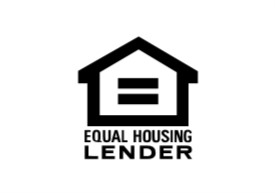There are many home loan choices. Finding the right lender will be the key to obtaining the information you need to make the right decision for your home financing situation. The pre-approval process should have uncovered many of the factors that determine which loan will work best for you and let you know what interest rate you might be paying. Remember, to get a good interest rate‡, you’ll need as high a credit score and down payment as possible. The right lender will be able to guide you and explain the differences in each of the mortgage loans you qualify for.
Here is a general discussion of some of the home loans available to help prep you for your first meeting with a potential lender. The main differences are the size of the down payment and whether the interest rates can change.
Types of mortgage loans: Conventional vs. Non-Conventional
One of the first decisions you will discuss with your lender is whether you want a conventional or non-conventional loan, which often depends on the size of the down payment for your housing loan.
Conventional
A conventional loan typically requires a minimum down payment of 5 percent. If you put down 5 to 19 percent, private mortgage insurance (PMI)‡ may be required. This insurance protects the lender if you do not repay your mortgage. Typically, you’ll have to pay this insurance until 78-80 percent of your mortgage is left, and then you may be able to remove PMI‡ from your payments. To avoid that extra insurance from the beginning, you’ll typically have to put down 20 percent or more. The median sale price for starter homes hit an all-time high of $250,000‡ in August 2024, but in case you’re wondering, the conventional loan limit in most areas is $806,500‡. These loans can be fixed or adjustable (more on that in a minute). Conventional loans also allow you to have the seller pay up to 3 percent of your home’s closing costs‡ and prepaid taxes and insurance.
FHA (non-conventional)
An FHA loan typically requires lower down payments than conventional mortgages, but there are also drawbacks to them. For example, FHA loans require mortgage insurance up front and it is usually more than private mortgage insurance with a conventional loan. Here’s how this type of loan works: The Federal Housing Authority‡ does not actually lend the money but insures 100 percent of what the lender funds. FHA loans tend to be the most flexible in their credit guidelines. They usually allow for lower credit scores, higher debt-to-income ratios and as little as 3.5 percent as a down payment. These loans allow for up to 6 percent seller-paid closing costs and prepaid taxes and insurance.
Veterans Affairs (VA)
The VA loan was designed to offer long-term financing to eligible American veterans or their surviving spouses (provided they do not remarry). The VA loan does not require a down payment and does not require monthly private mortgage insurance.
United States Department of Agriculture (USDA)
This loan is intended to help people purchase homes in rural areas. The property must be located within the USDA Rural Development Home Loan footprint‡. USDA loans offer 100 percent financing to qualified buyers and allow for all closing costs to be either paid for by the seller or financed into the loan.
Fixed vs. Adjustable-rate mortgages
After choosing a conventional vs. non-conventional loan, it’s time for another decision: Do you want a fixed or adjustable rate?
Fixed-rate mortgages
Fixed-rate loans are just that, loans that have interest rates that are locked in for the term of the loan. This means that your rate will not change during the entire time that you have the loan. Keep in mind that even with a fixed rate, your payment could vary based on changes in taxes or insurance. The repayment of the loan is also spread out, or amortized, over that same fixed period. You can choose from 10-, 15-, 20-, 25- and 30-year fixed rates. Generally, the shorter the term of the loan, the lower the rate, but also the higher the payment. For example, a 15-year loan will usually have a lower interest rate than a 30 year, but you’ll have to pay more per month in order to get the mortgage paid off sooner. Therefore, choosing the fixed-rate period will be a large part of determining the amount of your estimated monthly mortgage payment.
Adjustable-rate mortgages‡
These loans typically allow you to have lower payments at the very beginning but take on higher risk than fixed-rate loans. There is usually an initial time period (1 to 10 years) where the interest rate is fixed. However, the rate can change after the initial fixed period causing the monthly payment to go up. Be sure to talk to your lender about what type of loan is best for your situation. If any of these factors apply to you, your lender can explain in more detail how an adjustable-rate mortgage would work for you. However, an adjustable rate loan may be a good option if:
- you plan to sell in a few years,
- you will pay off the loan early, within the next few years, or
- interest rates are high right now and are anticipated to decrease in the coming years.
To avoid feeling overwhelmed, especially as first time homebuyers, remember, your lender is there to walk you through everything. Instead, focus on what your needs are. Then, you can outline with your lender what you’re looking for so he or she can provide your best options. Arrive at your first lender meeting with answers to the following questions:
- How much will you have for a down payment?
- How much of a budget or loan amount will you need?
- Do you want to get your loan paid off as soon as possible even if it means higher payments, or do you need lower payments with more time to pay it off?
Choosing the right lender is just one part of your home-buying team. Adding an experienced realtor will save you time and money and will be discussed in step three of buying a home.
Stay informed on industry trends and noteworthy company news by visiting our UMB in the News section on umb.com. Follow UMB on LinkedIn‡ and Facebook‡ to see regular updates about our company, people and timely financial perspectives.
When you click links marked with the “‡” symbol, you will leave UMB’s website and go to websites that are not controlled by or affiliated with UMB. We have provided these links for your convenience. However, we do not endorse or guarantee any products or services you may view on other sites. Other websites may not follow the same privacy policies and security procedures that UMB does, so please review their policies and procedures carefully.
Disclosure: This article is not intended as a Regulation Z advertisement.






